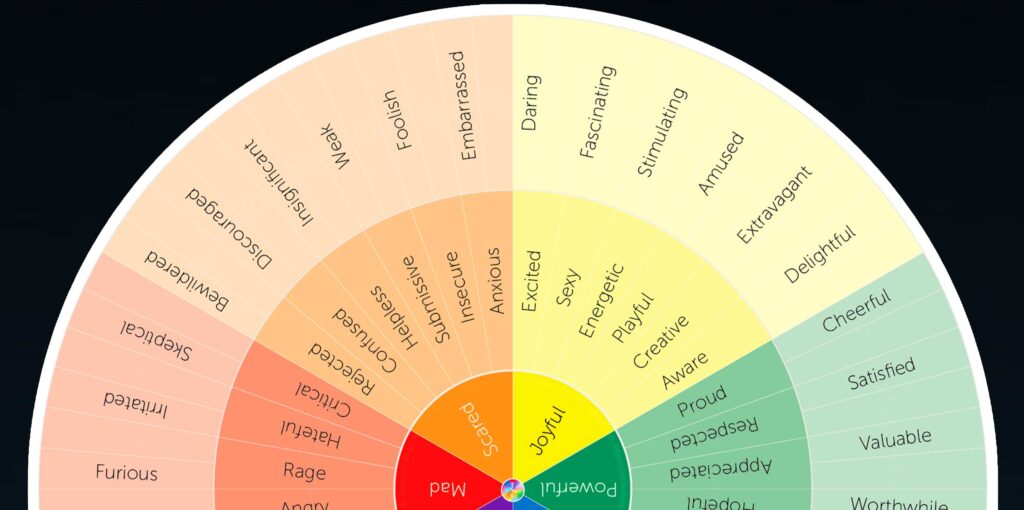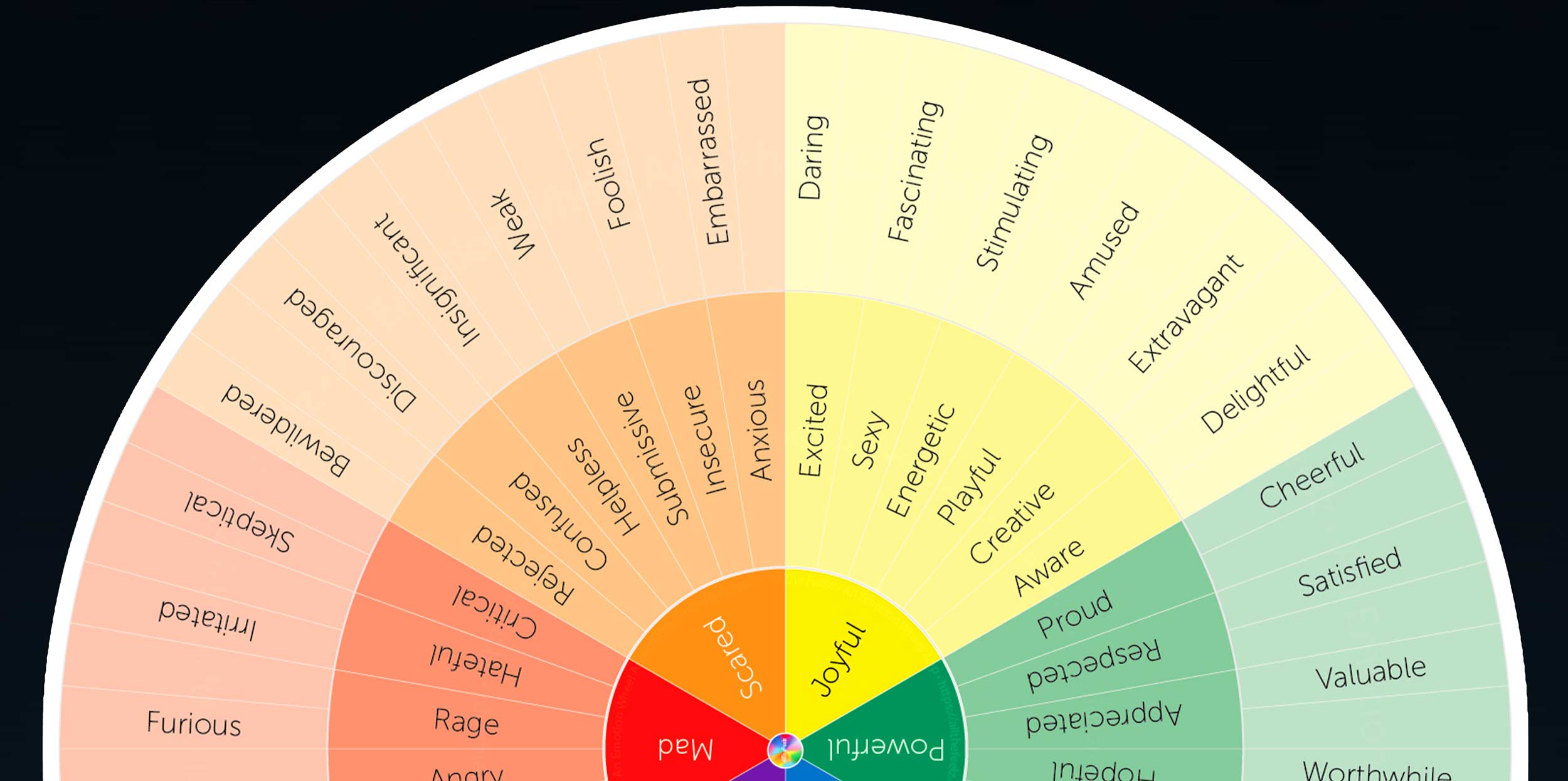
Understanding and Utilizing the Feelings Wheel: A Comprehensive Guide
The feelings wheel, a visual tool often resembling a color wheel, serves as a powerful resource for identifying and articulating emotions. Designed to expand emotional vocabulary and enhance self-awareness, the feelings wheel has found applications in therapy, education, and personal development. This guide provides a comprehensive overview of the feelings wheel, its origins, how to use it effectively, and its benefits for emotional intelligence.
The Origins and Evolution of the Feelings Wheel
The concept of the feelings wheel isn’t attributed to a single inventor but rather evolved over time. One of the most recognized versions is attributed to Dr. Gloria Willcox, who created her version in 1982. This wheel typically features a core set of primary emotions at the center, with concentric rings displaying more nuanced and specific feelings radiating outwards. The underlying principle is to help individuals move beyond basic emotion labels and delve into the complexities of their emotional experiences.
Over the years, various adaptations and versions of the feelings wheel have emerged, each tailored to different needs and contexts. Some variations incorporate cultural nuances, while others focus on specific age groups or therapeutic approaches. Despite these differences, the core function remains the same: to facilitate emotional identification and communication.
How to Use the Feelings Wheel Effectively
Using the feelings wheel is a straightforward process that can be integrated into daily reflection or used during specific emotional situations. Here’s a step-by-step guide:
- Start with the Core Emotions: Begin by identifying the primary emotion you are experiencing from the inner circle of the wheel. These are typically basic emotions like happiness, sadness, anger, fear, and surprise.
- Explore the Outer Rings: Once you’ve identified a primary emotion, move outwards to the subsequent rings. These rings contain more specific and nuanced feelings related to the core emotion. For example, if you identify “anger” as your primary emotion, the outer rings might offer options like “frustrated,” “irritated,” or “furious.”
- Consider the Intensity: Pay attention to the intensity of the emotion. Is it a mild irritation or a full-blown rage? The feelings wheel helps in differentiating the degrees of emotional intensity.
- Reflect on the Context: Consider the situation or event that triggered the emotion. Understanding the context can provide valuable insights into the underlying causes of your feelings.
- Communicate Your Feelings: Use the feelings wheel as a tool to articulate your emotions to others. This can be particularly helpful in interpersonal relationships and therapeutic settings.
Benefits of Using the Feelings Wheel
The feelings wheel offers a multitude of benefits for emotional well-being and interpersonal communication. Here are some key advantages:
- Enhanced Emotional Awareness: The wheel expands your emotional vocabulary and helps you identify feelings you might not have recognized before.
- Improved Communication: By providing a clear and structured way to articulate emotions, the feelings wheel facilitates more effective communication with others.
- Greater Self-Understanding: Reflecting on your emotions using the wheel can lead to deeper self-understanding and insights into your emotional patterns.
- Better Emotional Regulation: Identifying and understanding your emotions is the first step towards managing them effectively. The feelings wheel can aid in developing emotional regulation skills.
- Reduced Emotional Reactivity: By becoming more aware of your emotional triggers, you can learn to respond to situations with greater intention rather than reacting impulsively.
Applications of the Feelings Wheel
The feelings wheel is a versatile tool with applications in various settings:
Therapy and Counseling
Therapists often use the feelings wheel to help clients identify and process their emotions. It can be particularly useful for individuals who struggle with emotional expression or have difficulty understanding their feelings.
Education
In educational settings, the feelings wheel can be used to teach children and adolescents about emotional literacy. It helps them develop a vocabulary for expressing their feelings and understanding the emotions of others. [See also: Social Emotional Learning Resources]
Personal Development
Individuals can use the feelings wheel as a self-help tool to improve their emotional intelligence and self-awareness. Regular reflection using the wheel can lead to greater emotional well-being.
Conflict Resolution
The feelings wheel can be a valuable tool in conflict resolution, helping parties identify and articulate the emotions driving their behavior. This can lead to more constructive and empathetic communication.
Criticisms and Limitations
While the feelings wheel is a valuable tool, it’s important to acknowledge its limitations. Some criticisms include:
- Cultural Bias: The emotions listed on the wheel may not be universally recognized or experienced across different cultures.
- Oversimplification: Emotions are complex and nuanced, and a feelings wheel may not capture the full range of human emotional experience.
- Subjectivity: The interpretation of emotions can be subjective, and individuals may have different understandings of the terms used on the wheel.
Despite these limitations, the feelings wheel remains a useful starting point for exploring and understanding emotions.
Creating Your Own Feelings Wheel
While many pre-made feelings wheel templates are available, creating your own can be a valuable exercise in self-discovery. Here are some steps to consider:
- Identify Your Core Emotions: Start by listing the primary emotions you commonly experience.
- Brainstorm Related Feelings: For each core emotion, brainstorm a list of related feelings and nuances.
- Organize the Wheel: Arrange the emotions in concentric circles, with the core emotions at the center and the related feelings radiating outwards.
- Personalize the Wheel: Add colors, images, or other elements that resonate with you personally.
Creating your own feelings wheel allows you to tailor the tool to your specific needs and experiences.
The Future of Emotional Literacy and the Feelings Wheel
As emotional intelligence gains increasing recognition as a crucial life skill, tools like the feelings wheel are likely to become even more prevalent. Future developments may include:
- Digital Applications: Interactive digital feelings wheel apps that offer personalized insights and guidance.
- AI Integration: Artificial intelligence systems that can analyze emotional expressions and provide tailored feedback using the feelings wheel.
- Cross-Cultural Adaptations: More culturally sensitive versions of the feelings wheel that account for diverse emotional experiences.
The feelings wheel represents a valuable tool in the ongoing pursuit of emotional literacy and well-being.
Conclusion
The feelings wheel is a simple yet powerful tool for enhancing emotional awareness, improving communication, and fostering self-understanding. Whether used in therapy, education, or personal development, the feelings wheel provides a structured and accessible way to explore the complexities of human emotion. By understanding its origins, learning how to use it effectively, and recognizing its benefits, individuals can harness the power of the feelings wheel to cultivate greater emotional intelligence and well-being. Embrace the feelings wheel as a guide on your journey to emotional literacy and discover the richness of your inner world. The feelings wheel is more than just a diagram; it’s a gateway to understanding yourself and connecting with others on a deeper emotional level. Explore different versions of the feelings wheel to find one that resonates with you and begin your journey towards enhanced emotional awareness today.

